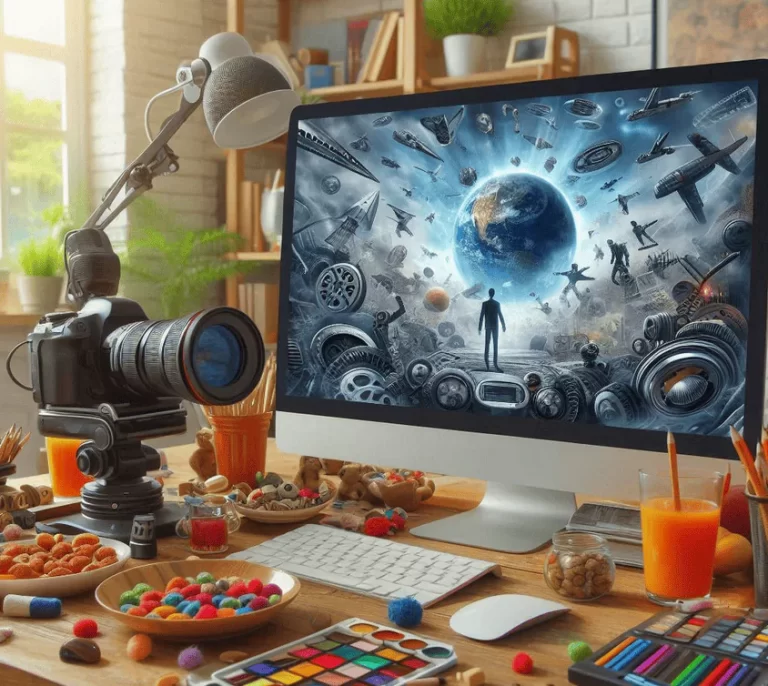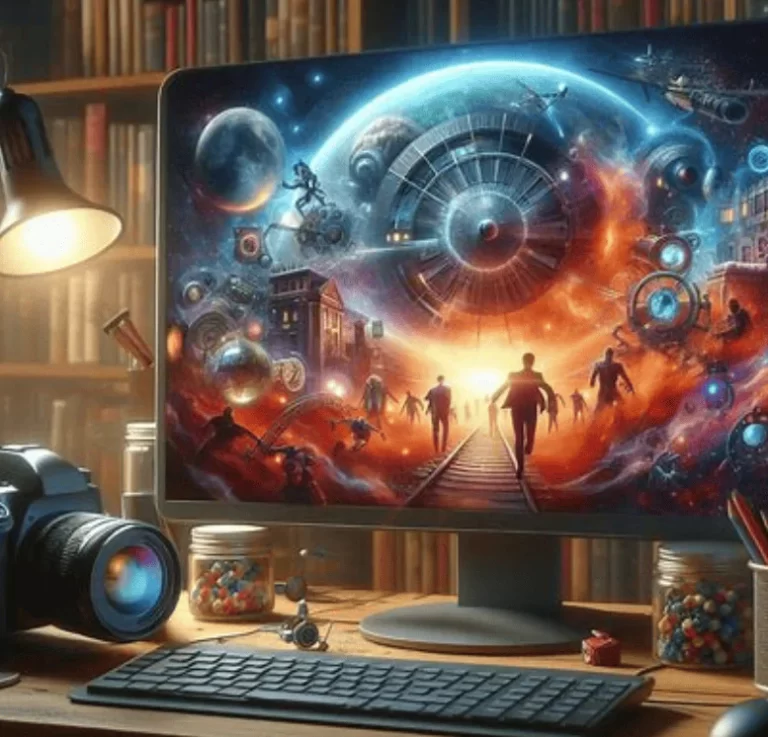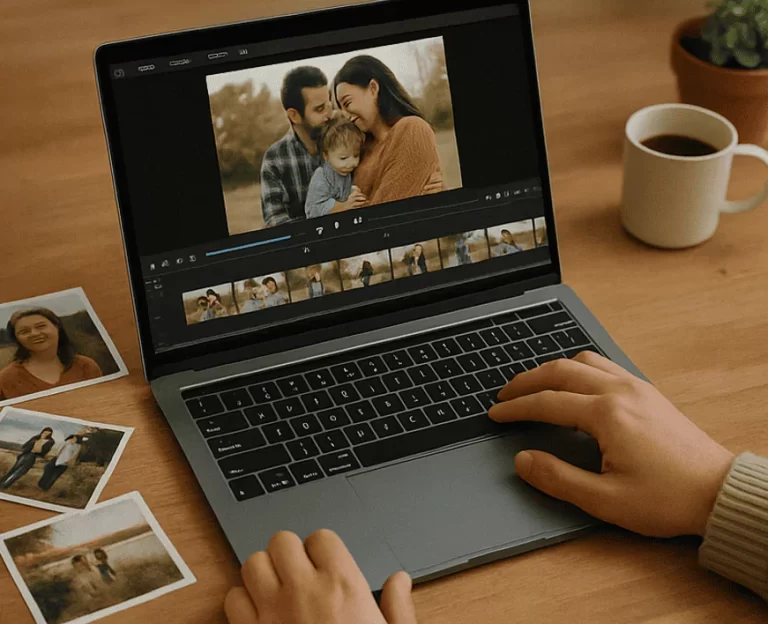
Digital Art of Storytelling In a world where technology continues to evolve, the way we share stories has also transformed. The Digital Art of Storytelling is at the forefront of this revolution, blending traditional narrative techniques with cutting-edge technology. It is a realm where creativity meets innovation, offering unprecedented ways to captivate audiences, evoke emotions, and communicate ideas.
The Foundations of Digital Art of Storytelling
The Power of Narrative
Stories have been an intrinsic part of human culture for millennia. They entertain, educate, and connect us to one another. With the advent of digital tools, storytelling has transcended the written and spoken word, integrating visual and interactive elements to create richer experiences. The Digital Art of Storytelling reimagines how narratives unfold, allowing creators to push boundaries and audiences to engage in new ways.
Art as a Storytelling Medium
Art has always been a vessel for storytelling. From the cave paintings of Lascaux to Michelangelo’s Sistine Chapel, visual art has narrated human experiences and emotions. The digital age has expanded this medium, turning screens into canvases and pixels into brushstrokes. In the Digital Art of Storytelling, every color, shape, and motion contributes to the narrative, transforming static images into dynamic tales.
The Evolution of Digital Storytelling
A Journey Through Technology
The transition from traditional to digital storytelling wasn’t instantaneous. It began with simple animations and graphic designs. Over time, advancements in software and hardware enabled the creation of immersive, interactive stories that can be experienced across multiple platforms. The Digital Art of Storytelling has evolved from linear tales into multidimensional narratives that adapt to their audience.
Interactive Narratives
Interactivity has become a hallmark of the Digital Art of Storytelling. Video games, virtual reality experiences, and augmented reality apps allow audiences to influence the direction of a story. This participatory element deepens emotional connections, making the audience not just consumers but co-creators of the narrative.
Tools and Techniques in Digital Storytelling
Animation and Motion Graphics
Animation breathes life into characters and settings, making them more relatable and engaging. Motion graphics add dynamic elements that guide the viewer’s attention and reinforce the story’s message. These tools are indispensable in the Digital Art of Storytelling, where movement often serves as the language of the narrative.
Virtual Reality (VR) and Augmented Reality (AR)
VR and AR technologies have revolutionized storytelling by immersing audiences in fully realized worlds. In VR, users can explore environments as active participants, while AR overlays digital elements onto the real world. These technologies create unparalleled levels of engagement in the Digital Art of Storytelling.
AI-Powered Creativity
Artificial intelligence is becoming an essential tool for creators. AI can generate story elements, suggest plotlines, and even create visuals based on input from artists. This integration allows for faster workflows and more innovative narratives, marking a new chapter in the Digital Art of Storytelling.
Examples of Digital Storytelling in Action
Pixar’s Animated Masterpieces
While rooted in traditional animation, Pixar’s storytelling demonstrates how digital techniques enhance emotional depth. Their films use cutting-edge technology to render lifelike visuals and create characters with compelling arcs. This blend of technology and artistry exemplifies the Digital Art of Storytelling.
“The Last of Us” Video Game Series
The video game industry has embraced the Digital Art of Storytelling with titles like The Last of Us. This game combines cinematic visuals, interactive gameplay, and emotionally charged narratives to immerse players in a post-apocalyptic world. The story unfolds based on player choices, making it deeply personal.
Immersive Museum Exhibits
Digital storytelling isn’t confined to entertainment. Museums and cultural institutions use digital art to create interactive exhibits that bring history to life. For example, projections and AR tools transform ancient artifacts into dynamic stories, bridging the gap between the past and the present.
The Role of Emotion in Digital Storytelling
Evoking Empathy
Emotion is the cornerstone of any compelling story. The Digital Art of Storytelling uses visual cues, soundscapes, and interactivity to evoke feelings of joy, sorrow, fear, or wonder. By engaging multiple senses, digital stories resonate on a deeper level than traditional media.
Building Connections
Digital storytelling fosters connections not only between the story and its audience but also among viewers themselves. Shared experiences, such as attending a virtual art exhibit or playing a narrative-driven game, create communities bound by a common narrative.
Challenges and Opportunities
Balancing Technology and Narrative
One of the challenges in the Digital Art of Storytelling is ensuring that technology enhances rather than overshadows the narrative. The story must remain the focal point, with digital tools serving to elevate its impact.
Accessibility
While digital storytelling offers exciting possibilities, it also raises concerns about accessibility. High-tech experiences may exclude those without access to the necessary devices or platforms. Ensuring inclusivity is crucial to the future of the Digital Art of Storytelling.
Endless Possibilities
Despite these challenges, the potential for innovation in digital storytelling is limitless. As technology continues to evolve, new tools and techniques will emerge, offering creators even more ways to tell their stories.
Looking Ahead
The Future of Digital Storytelling
The Digital Art of Storytelling is still in its infancy. Future advancements in AI, quantum computing, and immersive technologies will reshape the way we create and experience stories. Imagine narratives that adapt in real-time to audience reactions or art pieces that evolve based on viewer interactions.
Collaborative Creativity
Collaboration will be a key driver of innovation. By bringing together artists, technologists, and storytellers, the Digital Art of Storytelling will continue to break new ground. These partnerships will lead to the creation of narratives that are more diverse, inclusive, and impactful.
Conclusion
The Digital Art of Storytelling is a testament to humanity’s ability to adapt and innovate. By merging traditional narrative techniques with cutting-edge technology, it offers new ways to connect, inspire, and engage. As we stand on the brink of a new era in storytelling, one thing is certain: the art of telling stories will remain as vital and transformative as ever.



